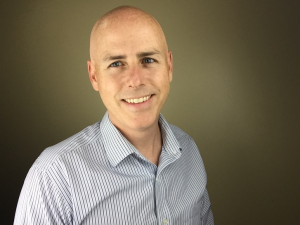 One of the best things about being a business coach is that I get to meet a lot of entrepreneurs in a wide variety of fields. I’m often struck by how diverse the local business community is, and by how similar their needs are when it comes to growing those businesses. My background is in working with high-growth startups — tech, manufacturing and service companies, mainly — but recently I’ve started to work with smaller, more creatively focused businesses. To my surprise, it turns out that both types of company have a lot of things in common. No matter what industry you’re in, some challenges are universal.
One of the best things about being a business coach is that I get to meet a lot of entrepreneurs in a wide variety of fields. I’m often struck by how diverse the local business community is, and by how similar their needs are when it comes to growing those businesses. My background is in working with high-growth startups — tech, manufacturing and service companies, mainly — but recently I’ve started to work with smaller, more creatively focused businesses. To my surprise, it turns out that both types of company have a lot of things in common. No matter what industry you’re in, some challenges are universal.
Recently, I was talking with the owner of a one-woman graphic design firm, and she was telling me about her struggles with landing clients. She was spending a lot of time meeting with prospective customers, but not landing as many of those job as she wanted to. Despite her best efforts, she just wasn’t getting enough business.
What was she doing wrong? If there’s one core business process I understand, it’s sales. Those first discussions with potential clients may not seem like a initial sales meeting, but functionally they are identical. To see the problem, I needed to understand her process.
After getting a referral or being contacted by potential client, she would arrange to meet them for coffee. There would be a “getting to know you” conversation, as well as some discussion about their needs. Her fee, if it was discussed at all in that first meeting, usually came up at the end. All totaled, it took roughly an hour for that first meeting, as well as whatever the gas cost was for driving to the cafe and the cost of the coffee.
To the inexperienced, this may seem like a completely reasonable investment of time when wooing a client. To me, it seemed like a glaringly inefficient sales process. That’s a fine way to meet some interesting people, but it’s a terrible way to move the needle when it comes to effectively growing your business and supporting yourself.
As a graphic designer, she bills by the hour. These initial consultations were mostly shots in the dark, where she had only the most vague understanding of what the prospect was looking for or what they could afford. Every time she met with one of those prospects, she’s was losing at least an hour of otherwise billable time. Looked at in terms of a pure cost/benefit analysis, that’s a significant gamble.
To change her results, we needed to completely deconstruct her approach to those initial consultations. It wasn’t her talent or professionalism that was failing her, it was her process. She needed a new way to offer an initial consultation that would quickly give her a clear understanding of those prospects’ needs, while also screening out clients who were clearly not a fit for her business.
The short version of the plan is this: The face-to-face coffee meetings needed to go. They were eating up time she could spend working on other projects, networking and looking for other clients. Instead, her initial consultations would happen over the phone. They would also have a time constraint of 20 minutes, giving both her and the prospect a great excuse to cut right to the point. There were several clear phases to the process, including several places where she could bring up the subject of compensation in a natural way.
The best thing about this process is that it doesn’t rule out those in-depth consultations over coffee. Instead, those meetings can now happen with people she’s reasonably sure will actually become paying clients. At the same time, those meetings can dive right into those clients’ needs, because the groundwork has already been established.
In my next post, I’ll go into a bit more detail about the structure of this initial consultation. It’s a great model for anyone freelancer or consultant to use, particularly if they don’t have much in the way of sales training.
